 |
| Atlas Medio II_1999_ Fragmento. Tela cosida y pintada. |

Teresa Lanceta se sumerge en
las comunidades tejedoras del Medio Atlas y a través de sus tradiciones
textiles – un secreto transmitido de generación en generación – participa de un
descubrimiento colectivo que ha facilitado a las personas vivir, comunicarse y
permanecer. Un arte marcado por un conjunto de normas, temas y hábitos
ancestrales cuyo dominio les permite la libertad expresiva y la creación. Como ella misma explica «culturas que crean la diferencia en la repetición, que poseen cánones muy fuertes que pueden ser transgredidos. La repetición trae el cambio y la diferencia trae la continuidad.»
las comunidades tejedoras del Medio Atlas y a través de sus tradiciones
textiles – un secreto transmitido de generación en generación – participa de un
descubrimiento colectivo que ha facilitado a las personas vivir, comunicarse y
permanecer. Un arte marcado por un conjunto de normas, temas y hábitos
ancestrales cuyo dominio les permite la libertad expresiva y la creación. Como ella misma explica «culturas que crean la diferencia en la repetición, que poseen cánones muy fuertes que pueden ser transgredidos. La repetición trae el cambio y la diferencia trae la continuidad.»
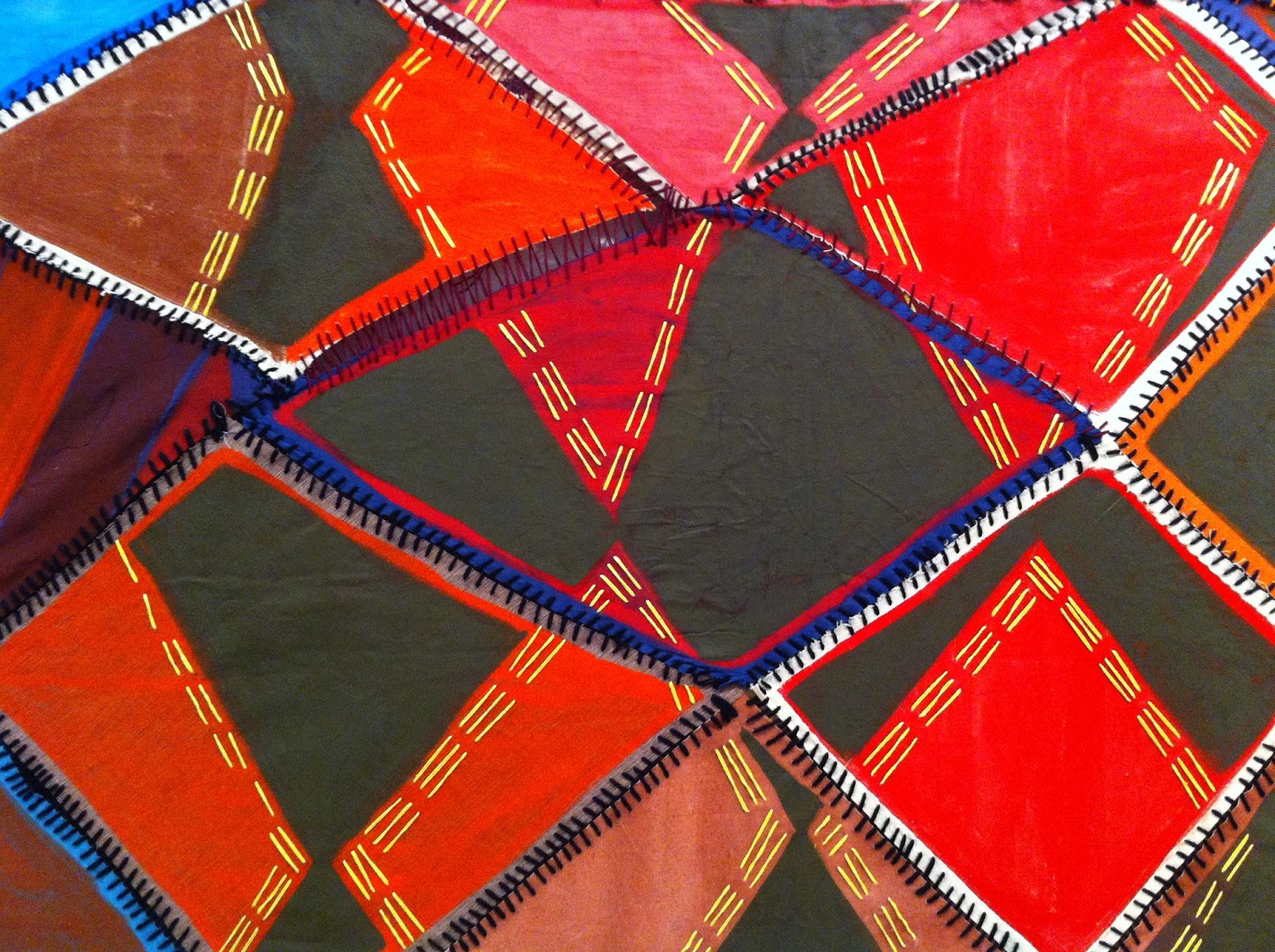 |
| Adiós al Rombo III_»012-2013_Fragmento.Tela Cosida y pintada. |
Desde principios de los años
setenta Teresa Lanceta tomó la decisión de tejer como medio de expresión artística,
forzando los límites de la comprensión de lo que se considera o no arte. Su
aproximación al tejido se centra en los elementos formales, en lo que los
tejidos tienen de original y propio: sus ligamentos, materiales, tradiciones y
técnicas. Un modo de hacer, sin boceto previo en el que imagen y fondo se
construyen a la vez, sin dar cabida al error.
setenta Teresa Lanceta tomó la decisión de tejer como medio de expresión artística,
forzando los límites de la comprensión de lo que se considera o no arte. Su
aproximación al tejido se centra en los elementos formales, en lo que los
tejidos tienen de original y propio: sus ligamentos, materiales, tradiciones y
técnicas. Un modo de hacer, sin boceto previo en el que imagen y fondo se
construyen a la vez, sin dar cabida al error.
Tejer le ha permitido a
Teresa Lanceta comprender un código primigenio y universal que manifiesta claramente
su ley interna que traspasa fronteras físicas, temporales y culturales al tiempo
que alimenta la imaginación creadora, a partir de la cual elabora una propuesta
personal.
Teresa Lanceta comprender un código primigenio y universal que manifiesta claramente
su ley interna que traspasa fronteras físicas, temporales y culturales al tiempo
que alimenta la imaginación creadora, a partir de la cual elabora una propuesta
personal.
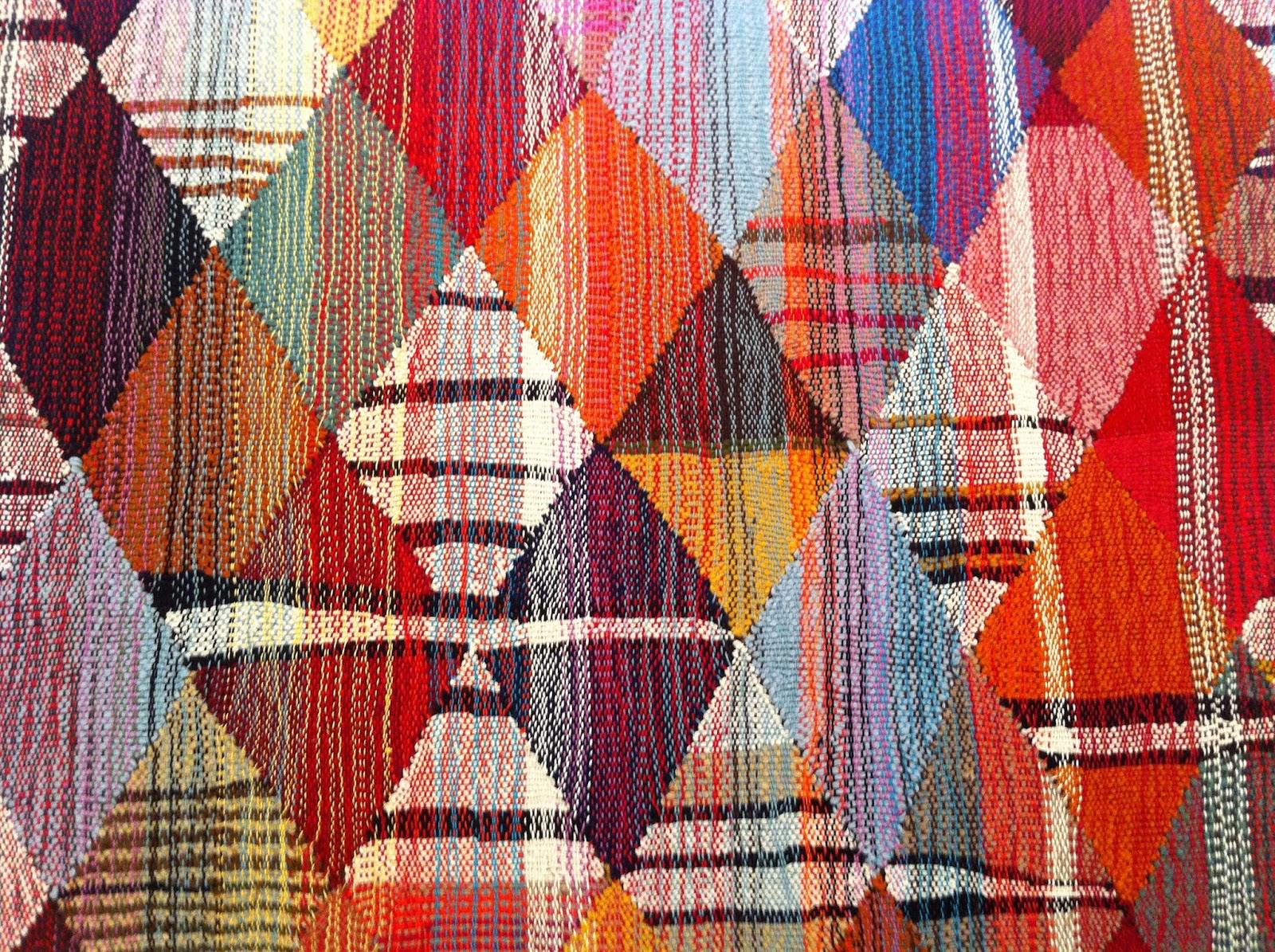 |
|
| Adiós al Rombo III_2005_Fragmento. Tejido de Lana y algodón. |
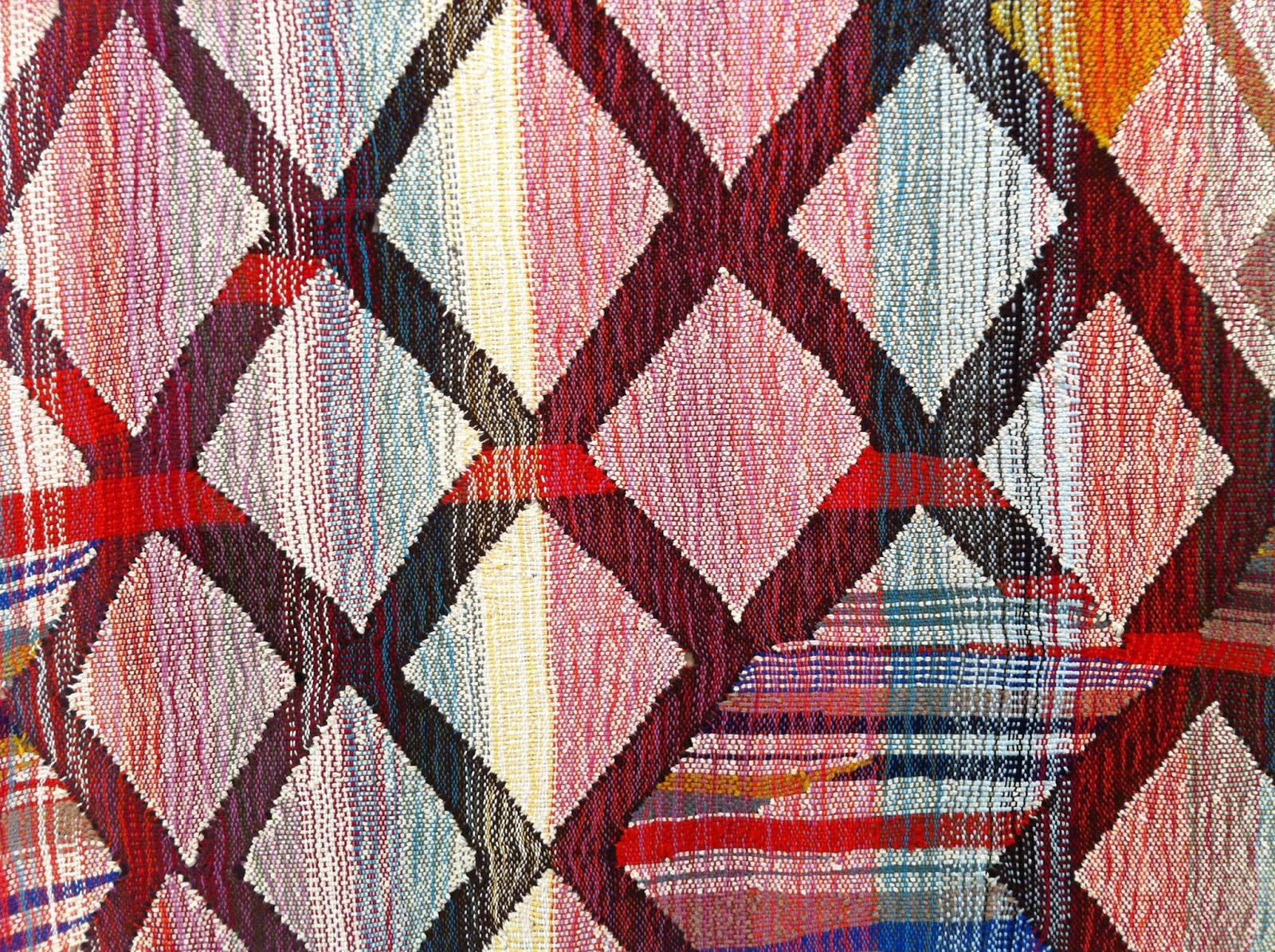 |
||
| Adiós al Rombo II_2005-2006.Fragmento. Tejido de lana y algodón. |
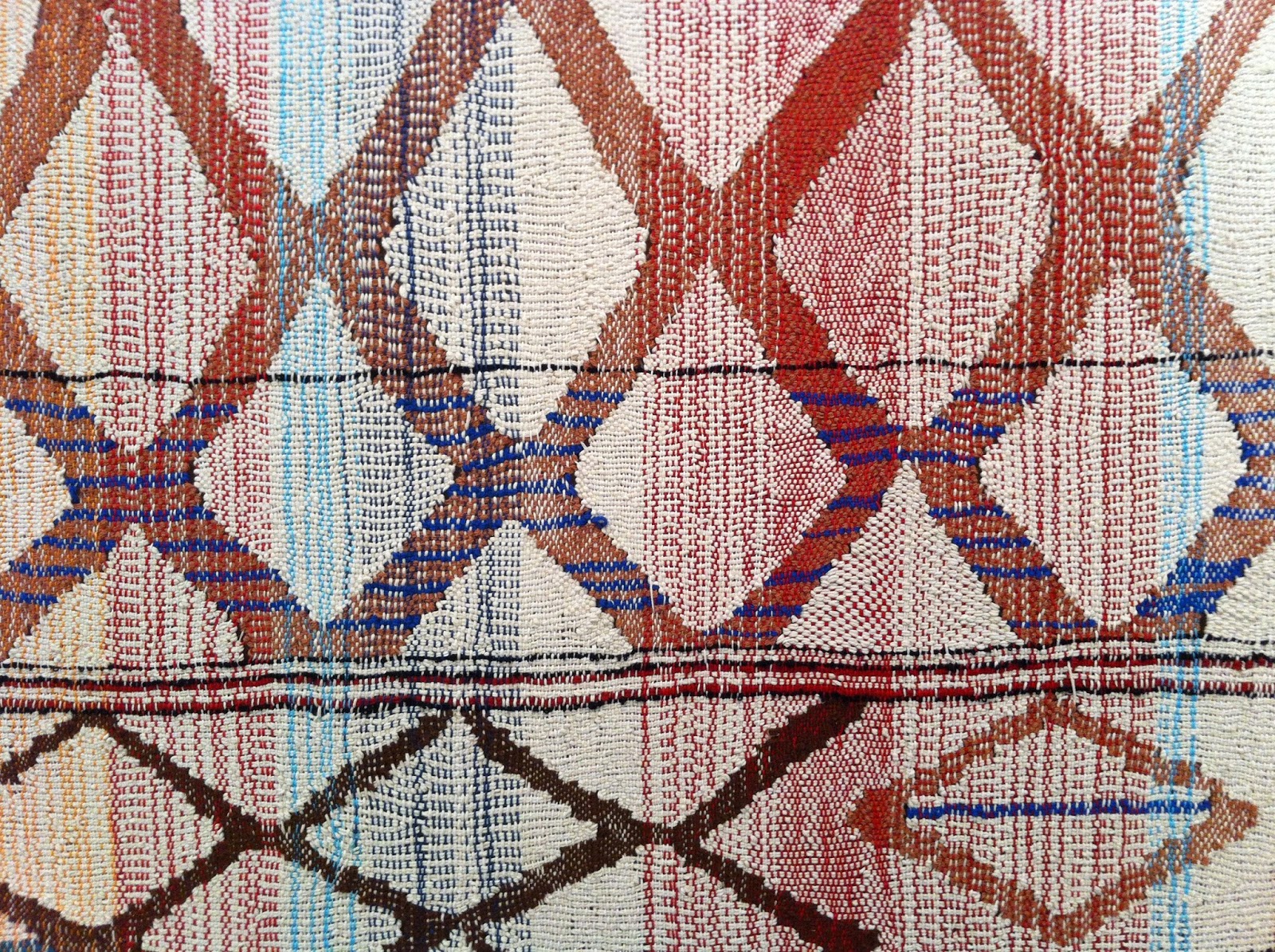 |
||
| Adiós al Rombo IV_2012-2013.Fragmento. Tejido de lana y algodón. |
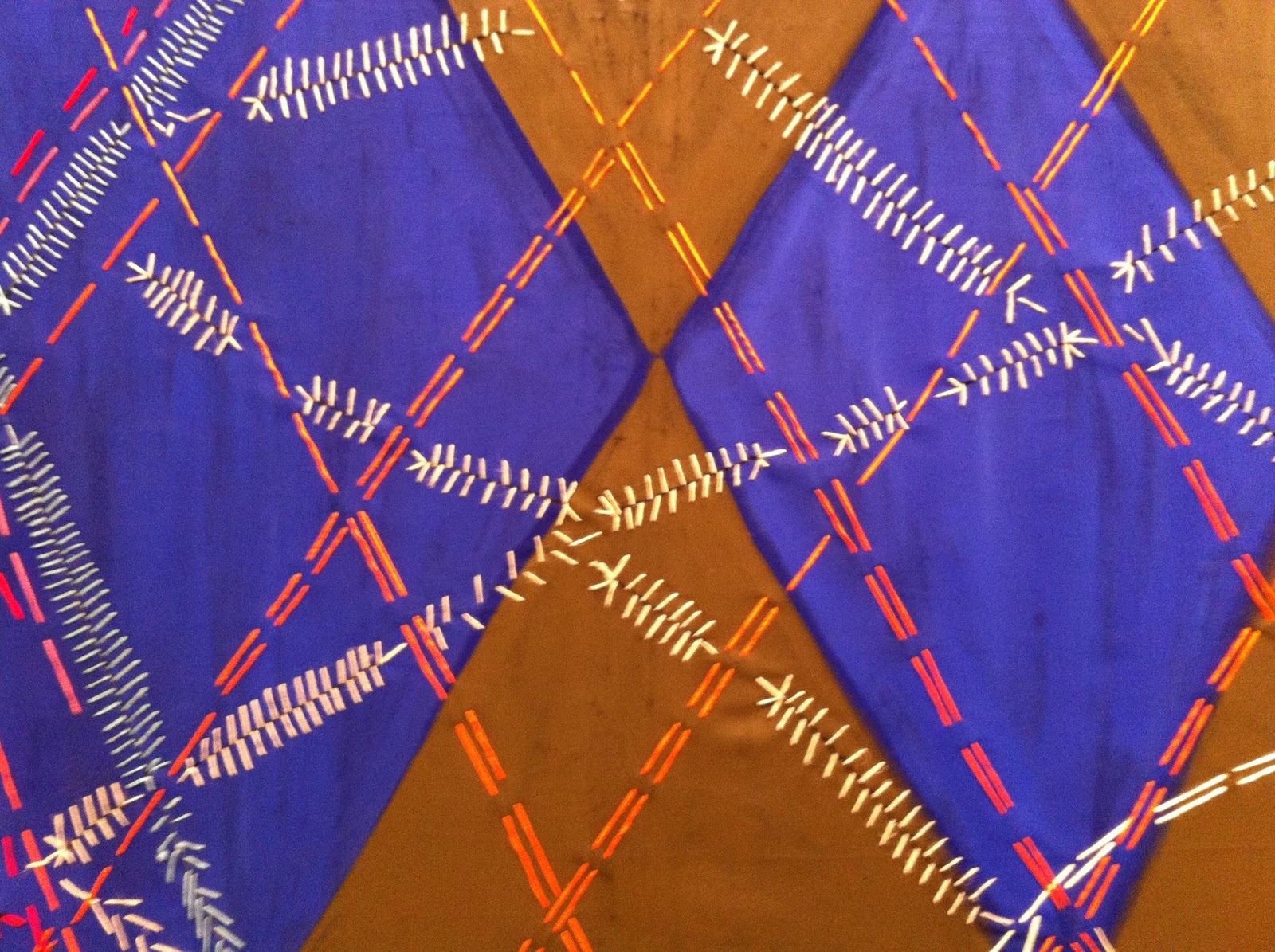 |
|
| Adiós al Rombo III_2012-2013. Fragmento. Tela cosida y pintada. |
Su trabajo de investigación
sobre tejidos marroquíes fue expuesto en el Centro de Arte Reina Sofía en el
año 2.000.
sobre tejidos marroquíes fue expuesto en el Centro de Arte Reina Sofía en el
año 2.000.
La Casa Encendida expone ahora, del
10 de junio al 18 de septiembre de 2016, ‘Adiós al Rombo’ un punto de llegada en este recorrido donde se unen arte tradicional y creación contemporánea, los tejidos de Teresa Lanceta.
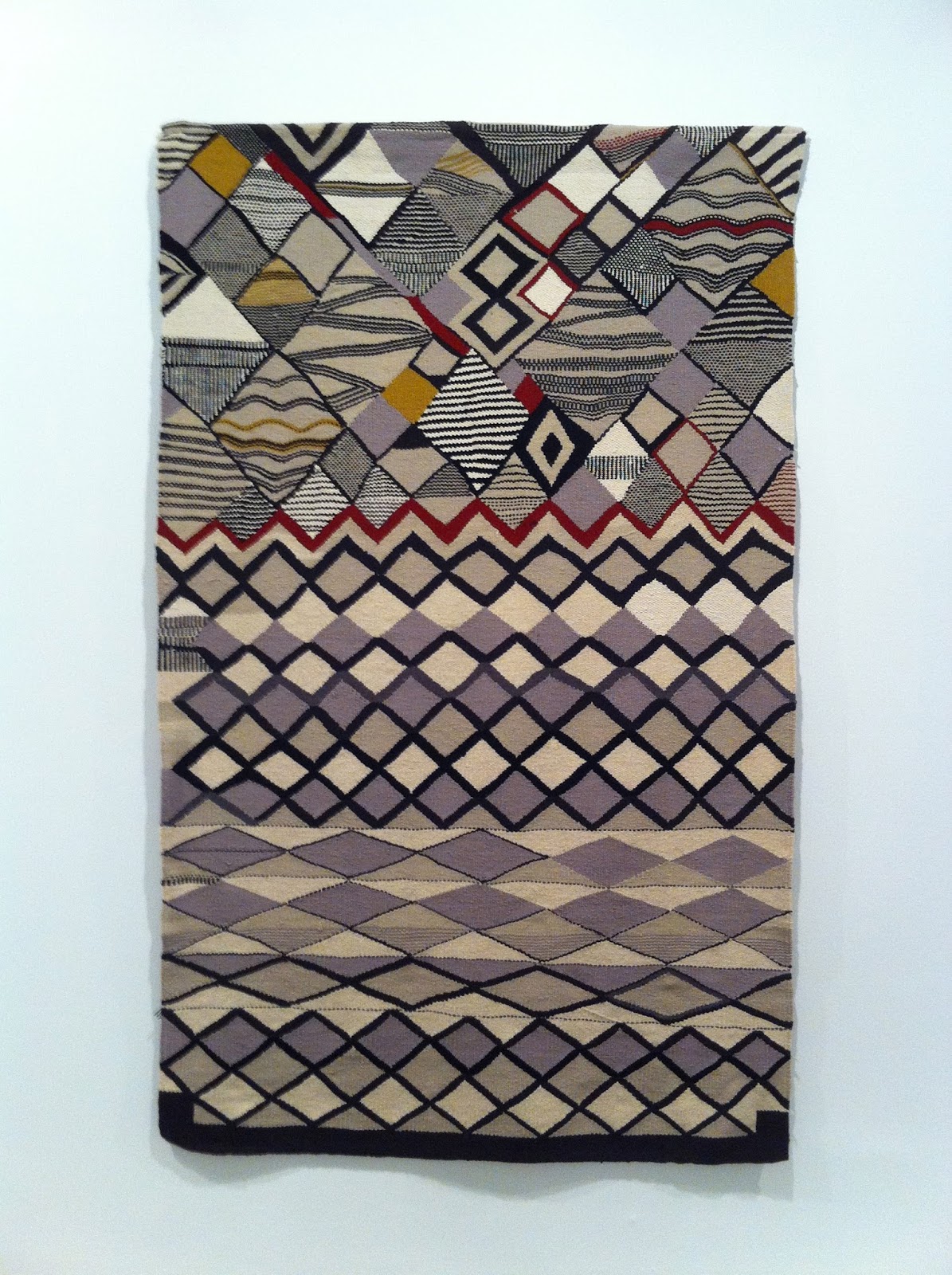
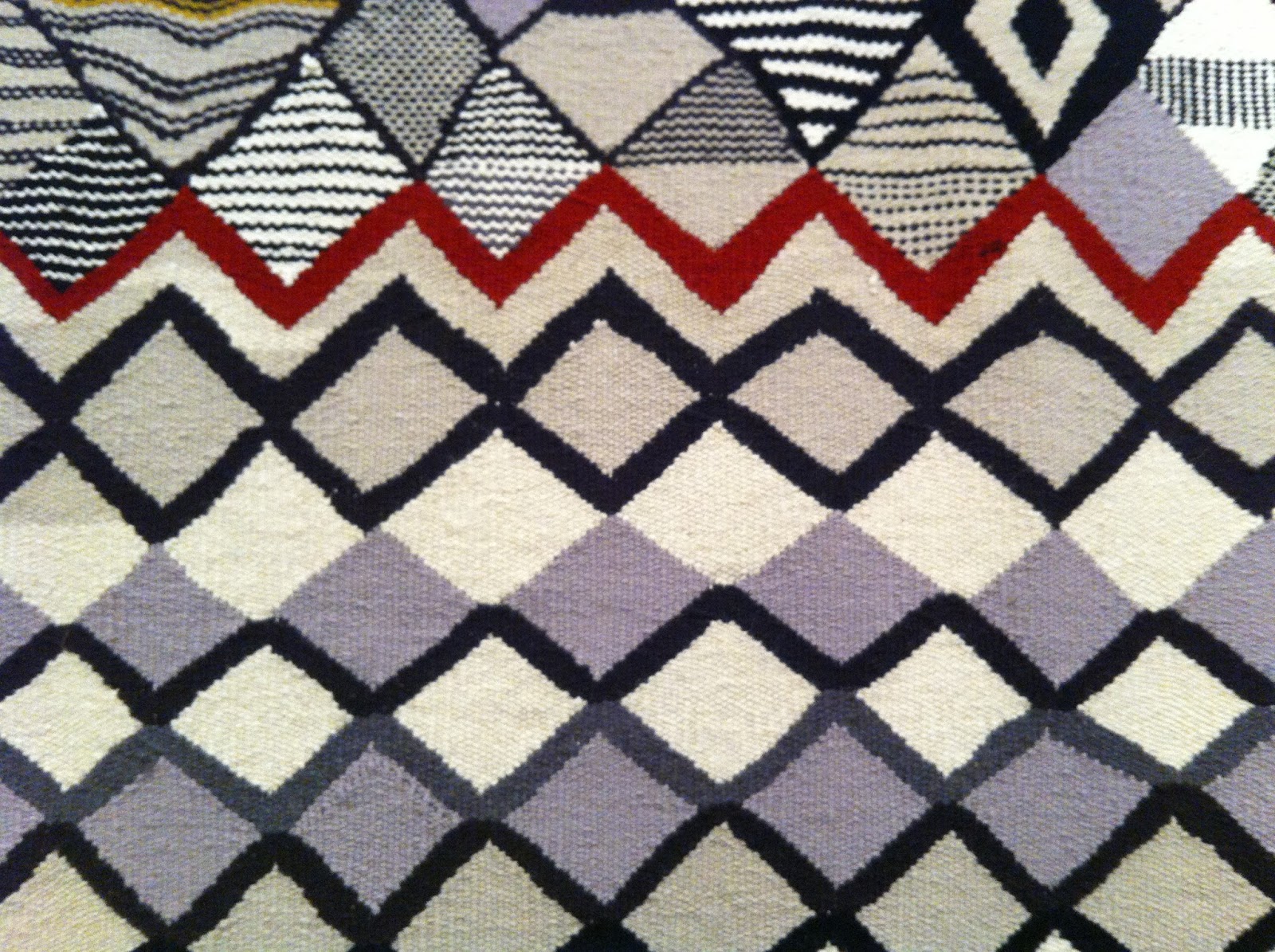 |
| Al norte del Atlas Medio_1999. Fragmento. Tejido de lana y algodón. |
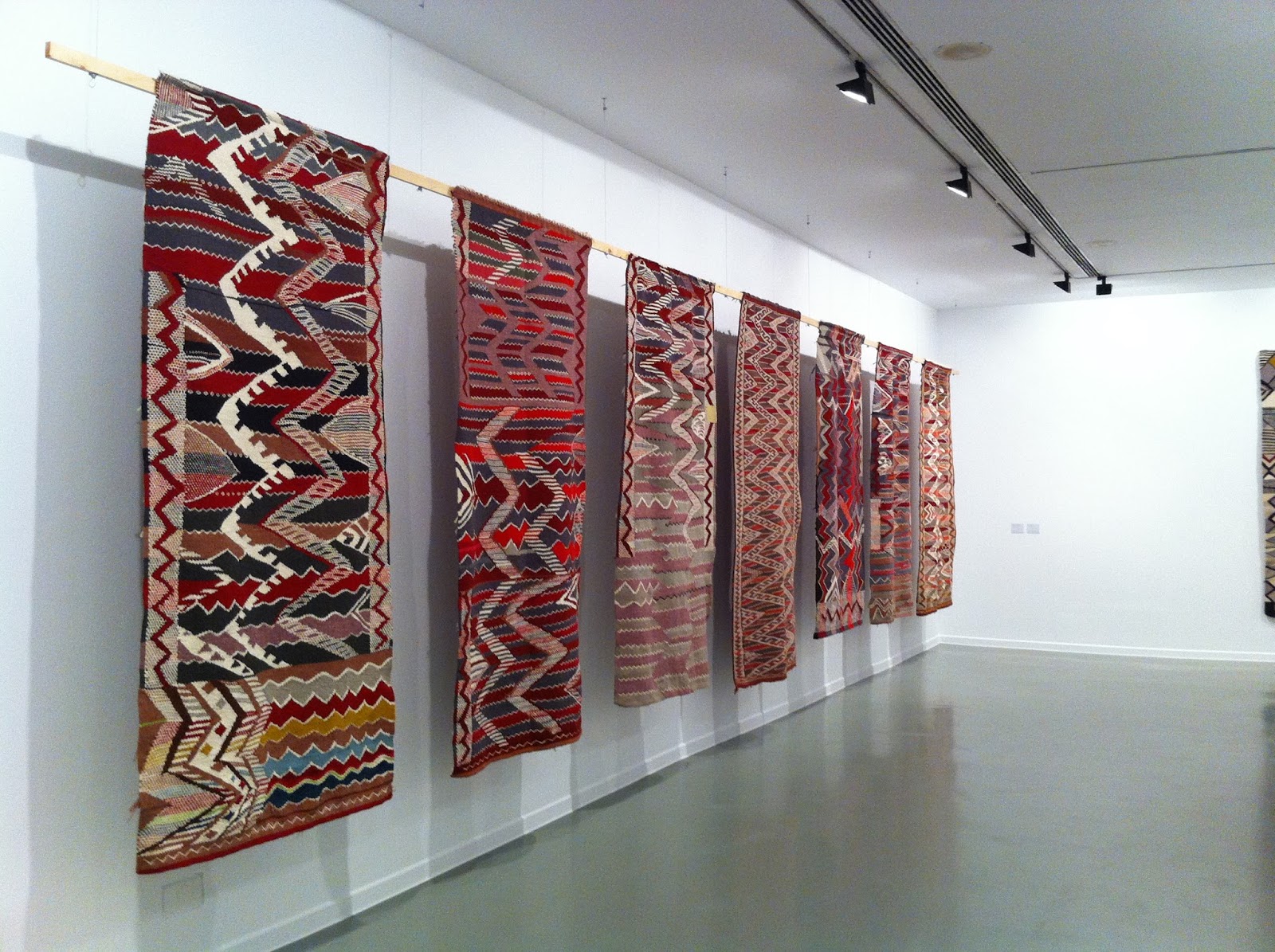 |
| Sala Exposición. La Casa Encendida. 2016 |
Video:
https://vimeo.com/171546880
Farewell to the
Rhombus: Teresa Lanceta – La Casa Encendida exhibition.
Rhombus: Teresa Lanceta – La Casa Encendida exhibition.
Teresa Lanceta
immersed herself in the weaving communities of the Middle Atlas, and through
their textile traditions – a secret passed down from generation to generation –
her eyes were opened to a collective discovery that has help people to live,
communicate and endure: and marked by ancient habits, motifs and rules which,
when mastered, allowed expressive freedom and creativity.
immersed herself in the weaving communities of the Middle Atlas, and through
their textile traditions – a secret passed down from generation to generation –
her eyes were opened to a collective discovery that has help people to live,
communicate and endure: and marked by ancient habits, motifs and rules which,
when mastered, allowed expressive freedom and creativity.
As she explains
“Cultures that create the difference in repetition, which have strong canons
that can be transgressed. Repetition brings the change and the difference brings
the continuity.”
“Cultures that create the difference in repetition, which have strong canons
that can be transgressed. Repetition brings the change and the difference brings
the continuity.”
In the early
1970s, Teresa Lanceta decided to embrace weaving as a medium of artistic
expression, stretching the limits of comprehension of what can or cannot be
considered art. Her approach to weaving focuses on the formal elements, on the
original, inherent aspects of woven fabric: its ligaments, materials,
traditions and techniques. She does not use preliminary designs or sketches; in
her modus operandi, she simultaneously constructs picture and ground, object
and language, support and image, and mistakes do not exist.
1970s, Teresa Lanceta decided to embrace weaving as a medium of artistic
expression, stretching the limits of comprehension of what can or cannot be
considered art. Her approach to weaving focuses on the formal elements, on the
original, inherent aspects of woven fabric: its ligaments, materials,
traditions and techniques. She does not use preliminary designs or sketches; in
her modus operandi, she simultaneously constructs picture and ground, object
and language, support and image, and mistakes do not exist.
Weaving has
allowed Teresa Lanceta to understand a primeval, universal code that reveals
its internal law, a law that transcends physical, temporal and cultural borders
while also fuelling the creative imagination which she uses to devise a highly
personal proposal.
allowed Teresa Lanceta to understand a primeval, universal code that reveals
its internal law, a law that transcends physical, temporal and cultural borders
while also fuelling the creative imagination which she uses to devise a highly
personal proposal.
Her work, inspired
by the investigation of Morocan’s textiles was exhibited in Museo Reina Sofía,
in 2000.
by the investigation of Morocan’s textiles was exhibited in Museo Reina Sofía,
in 2000.
Now, La Casa
Encendida shows, from 10 of June to 18 of September of 2016, ‘Farewell to the
Rhombus’, the textiles of Teresa Lanceta.
Encendida shows, from 10 of June to 18 of September of 2016, ‘Farewell to the
Rhombus’, the textiles of Teresa Lanceta.
